Expert IT Risk Assessment: Protect Your Business Today!

What is an IT Risk Assessment?
Definition of IT Risk Assessment
IT Risk Assessments is a systematic process of identifying, evaluating, and mitigating risks that could potentially affect an organization's information technology infrastructure. This process encompasses the analysis of threats to data integrity, confidentiality, and availability, as well as vulnerabilities in IT systems and networks. By conducting an IT risk assessment, organizations aim to pinpoint areas of potential exposure, assess the impact of various risks, and prioritize actions to mitigate those risks effectively. This proactive approach helps in safeguarding critical IT assets and ensures the resilience of IT operations.
What Makes IT Risk Assessment Important for Business Continuity?
It provides a structured framework for identifying and addressing potential IT threats that could disrupt business operations. This assessment helps organizations anticipate and prepare for various IT-related incidents, such as cyber-attacks, hardware failures, or data breaches. By understanding the potential impact of these risks, businesses can develop robust strategies to maintain operational integrity and recover swiftly from disruptions. Additionally, a thorough IT risk assessment enhances an organization’s ability to comply with regulatory requirements, protect sensitive data, and maintain customer trust, all essential for sustained business success.
Role in Organizational Decision-Making
IT risk assessment is integral to informed organizational decision-making. Providing a detailed analysis of potential IT threats and their impacts equips decision-makers with the knowledge needed to prioritize resource allocation, enhance security measures, and implement strategic IT investments. This process helps in identifying critical IT assets and understanding their vulnerabilities, which is crucial for making decisions that balance risk with business objectives. Moreover, insights gained from IT risk assessments can guide the development of policies and procedures that enhance overall IT governance and resilience, ensuring that the organization is better prepared to respond to emerging threats.
System Failure and Its Impact on IT Risk
System failures can significantly impact IT risk by exposing vulnerabilities and disrupting essential business functions. These failures, which can result from hardware malfunctions, software bugs, or network outages, highlight weaknesses within an organization's IT infrastructure. Such failures can range from minor operational delays to severe disruptions affecting data integrity, availability, and confidentiality. Conducting an IT risk assessment helps organizations understand the potential consequences of system failures and develop strategies to mitigate these risks. This includes implementing redundancy, regular system maintenance, and robust incident response plans to ensure quick recovery and minimize operational downtime.
Why Do Businesses Need to Conduct an IT Risk Assessment?
Identify and Mitigate Vulnerabilities in Their IT Infrastructure
Conducting an IT risk assessment is essential for businesses to identify and mitigate vulnerabilities within their IT infrastructure systematically. This process thoroughly examines the entire IT landscape, including hardware, software, networks, and data storage systems. By pinpointing weak points and potential threats, organizations can implement targeted measures to strengthen their defenses. This proactive approach not only enhances the overall security posture but also helps in preventing potential exploits that could lead to significant operational disruptions or data breaches. Regular IT risk assessments ensure that emerging threats are quickly identified and addressed, keeping the IT infrastructure resilient and secure.
Protect Sensitive Data from Breaches and Ensure Compliance with Regulatory Requirements
With increasing cyber threats and stringent regulatory requirements, businesses must ensure their data protection measures are robust and compliant. IT risk assessments help organizations identify weaknesses in data handling and storage practices, allowing them to implement necessary safeguards such as encryption, access controls, and regular audits. Additionally, these assessments assist in ensuring compliance with regulations like GDPR, HIPAA, or CCPA, which mandate specific data protection standards. By addressing vulnerabilities and enhancing data security measures, businesses can significantly reduce the risk of data breaches and avoid hefty fines and legal repercussions associated with non-compliance.
Minimize Potential Financial Losses and Enhance Business Continuity
IT risk assessments are crucial for minimizing potential financial losses and enhancing business continuity. Unidentified IT risks can lead to severe financial consequences, including costs associated with system downtimes, data loss, and reputational damage. By systematically assessing and addressing these risks, businesses can implement strategies to prevent or quickly recover from IT incidents. This includes developing comprehensive disaster recovery plans, establishing robust backup systems, and investing in cybersecurity insurance. These measures not only safeguard the organization’s financial stability but also ensure that business operations can continue with minimal disruption in the event of an IT failure. Effective risk management through regular IT risk assessments are thus key to maintaining business continuity and protecting the bottom line.
Prioritize Security Investments and Better Allocate Resources
This helps businesses prioritize their security investments and allocate resources more effectively. By identifying the most significant risks and vulnerabilities, organizations can focus their resources on areas that require immediate attention and have the highest potential impact on security. This targeted approach ensures that investments in security measures are cost-effective and aligned with the organization’s risk management strategy. It also prevents over-spending on low-risk areas while ensuring critical vulnerabilities are adequately addressed, optimizing the overall allocation of IT resources.
Maintain Customer Trust and Protect Brand Reputation
Customers expect their personal and financial information to be secure, and any breach can severely damage an organization’s reputation. Businesses can implement strong security measures that protect customer data from breaches and cyber-attacks by identifying and mitigating IT risks. This proactive approach enhances customer trust and strengthens the brand’s reputation for reliability and security. In a competitive market, a strong reputation for data security can be a significant differentiator and a key factor in customer retention and acquisition.
Improve Decision-Making Processes Related to IT Security
These assessments provide valuable insights into the organization’s risk landscape, enabling informed decision-making about security policies, investments, and strategies. By understanding the specific risks and their potential impacts, decision-makers can develop more effective IT security policies and response plans. This data-driven approach ensures that security decisions are based on a comprehensive understanding of the organization’s risk profile, leading to more effective risk management and a stronger overall security posture.
Basic Elements of IT Risk Assessment
Threat Identification
This process involves identifying threats that could exploit systems, networks, or data vulnerabilities. Threat identification is a foundational element of IT risk assessment, focusing on recognizing potential sources of harm to an organization’s IT infrastructure. These threats can include cyber-attacks such as malware, ransomware, and phishing, as well as physical threats like natural disasters or unauthorized access. By systematically cataloging these threats, organizations can better understand the specific risks they face and develop targeted strategies to mitigate them. Effective threat identification requires continuous monitoring and updating as new threats emerge, ensuring the organization remains vigilant and prepared against evolving dangers.

Vulnerability Assessment
This involves thoroughly examining the IT environment, including hardware, software, networks, and processes, to uncover potential security gaps. Vulnerability management is a critical component of IT risk assessment, aimed at identifying weaknesses in an organization’s IT systems that could be exploited by threats. Techniques such as vulnerability scanning, penetration testing, and security audits are commonly used to identify and evaluate these weaknesses. By understanding where vulnerabilities exist, organizations can prioritize remediation efforts, implement appropriate security measures, and reduce the risk of exploitation. Regular vulnerability assessments are essential to maintaining a robust security posture, as they help detect and address new vulnerabilities that may arise over time.
Impact Analysis
This process assesses the severity of the impact on critical IT assets, business operations, and overall organizational objectives. impact analysis is a vital aspect of IT risk assessment that evaluates the potential consequences of identified threats exploiting vulnerabilities. Impact analysis considers factors such as data loss, operational downtime, financial costs, and reputational damage. By quantifying the potential effects of different risks, organizations can prioritize their risk mitigation efforts and allocate resources effectively. This analysis helps in understanding the broader implications of IT risks and guides the development of comprehensive response and recovery strategies, ensuring that the organization can swiftly and effectively handle potential IT disruptions.
Likelihood Determination
This process involves analyzing historical data, threat intelligence, and current security trends to estimate how likely various threats are to occur. Factors such as the frequency of threat occurrences, the effectiveness of existing security controls, and the organization’s exposure to different threat vectors are considered. By determining the likelihood of potential threats, organizations can prioritize risks based on their probability and develop strategies to address the most pressing risks first. This helps in allocating resources efficiently and enhancing the organization’s overall security posture.
Risk Evaluation
An important element of IT risk assessment involves assessing the combined effect of the likelihood of threats and their potential impact on the organization. This process helps rank risks based on their severity and prioritizes them for mitigation. Risk evaluation often uses a risk matrix or scoring system to categorize risks as low, medium, or high, depending on their assessed likelihood and impact. This structured approach provides a clear understanding of which risks pose the greatest threat to the organization’s IT infrastructure and business operations, guiding decision-makers in developing effective risk management and mitigation strategies.
Risk Mitigation Strategies
These strategies can include a range of actions such as implementing advanced security technologies, enhancing existing security controls, improving policies and procedures, and conducting regular training for staff. Risk mitigation also involves developing contingency plans, such as disaster recovery and business continuity plans, to ensure that the organization can quickly recover from IT incidents. By adopting a comprehensive approach to risk mitigation, organizations can significantly reduce their vulnerability to IT risks and enhance their ability to maintain operational resilience in the face of potential threats.

How to Perform a Successful IT Risk Assessment?
IT Risk Assessment Process
Performing a successful IT risk assessment involves a structured process that ensures all potential risks are systematically identified, evaluated, and mitigated. This process includes several key steps, each contributing to a comprehensive understanding of the organization’s risk landscape. By following a well-defined process, organizations can effectively safeguard their IT infrastructure against potential threats and ensure business continuity.
Define the Scope and Objectives
This involves determining the boundaries of the assessment, including which systems, networks, and data will be evaluated. Defining the scope and objectives is the initial step in the IT risk assessment process. Clear objectives should be established to guide the assessment, such as identifying critical vulnerabilities, ensuring compliance with regulations, or enhancing overall security posture. By setting specific goals and defining the scope, organizations can focus their efforts and resources on the most relevant areas, ensuring a thorough and effective risk assessment.
Assemble the Right Team
This team should comprise individuals with diverse expertise, including IT security professionals, network administrators, data protection officers, and representatives from various business units. Having a multidisciplinary team ensures that all aspects of the IT infrastructure and business operations are considered. Team members should collaborate closely, sharing insights and expertise to identify potential risks comprehensively and develop effective mitigation strategies. Clear roles and responsibilities should be defined to facilitate efficient teamwork and communication throughout the assessment process. Assembling the right team is crucial for a successful IT risk assessment.
Identify Assets
This involves creating an inventory of all critical IT assets, including hardware, software, data, and network components. Each asset should be evaluated for its importance to business operations and its potential impact if compromised. Understanding the value and role of each asset helps in prioritizing risks and focusing security efforts on the most critical areas. Accurate asset identification ensures that all valuable components are protected and that the organization’s IT infrastructure remains resilient against potential threats.
Identify Threats and Vulnerabilities
This step involves analyzing the IT environment to detect potential threats, such as cyber-attacks, natural disasters, or insider threats, and identifying vulnerabilities that could be exploited by these threats. Techniques like threat modeling, vulnerability scanning, and security audits are commonly used to uncover weaknesses in the system. By thoroughly identifying threats and vulnerabilities, organizations can gain a clear understanding of their risk exposure and develop targeted strategies to mitigate these risks effectively.
Assess Risks
This step combines the probability of occurrence with the severity of consequences to determine the overall risk level. Risk assessment often uses qualitative or quantitative methods, such as risk matrices or scoring systems, to categorize risks as low, medium, or high. This systematic evaluation helps organizations prioritize their risks based on their potential impact on business operations and IT infrastructure, guiding the development of effective mitigation and response strategies. Assessing risks involves evaluating the likelihood and potential impact of identified threats exploiting vulnerabilities.
Prioritize Risks
Based on the risk assessment results, organizations should rank risks according to their likelihood and impact, allocating resources to mitigate the highest-priority risks. This prioritization ensures that critical vulnerabilities are addressed promptly, reducing the potential for significant disruptions. By focusing on the most pressing risks, organizations can enhance their overall security posture and ensure that their IT infrastructure is well-protected against potential threats. Effective risk prioritization enables efficient resource allocation and strengthens the organization’s ability to maintain business continuity.
Recommend Controls
It involves suggesting specific security measures and practices to mitigate identified risks. These controls can range from technical solutions like firewalls, encryption, and intrusion detection systems to procedural controls such as access management policies, regular security training, and incident response plans. Each control should be tailored to address the specific risks identified during the assessment, ensuring that the organization’s security measures are both effective and relevant. By implementing these recommended controls, organizations can significantly reduce their risk exposure and enhance their overall security posture.
Document the Findings
This involves creating detailed reports that outline identified risks, their potential impacts and recommended mitigation strategies. Documentation should include a comprehensive assessment process overview, findings, risk evaluations, and control recommendations. This record serves as a valuable reference for decision-makers, facilitating informed risk management decisions and providing a basis for future assessments. Well-documented findings ensure transparency and accountability in the risk assessment process.
Develop a Budget Appropriate for Your Business
The budget should allocate resources for the most critical controls and mitigation measures, considering the organization’s financial capacity and risk tolerance. It’s important to recognize that not all risks need to be mitigated; some can be accepted as part of the business risk. The budget should reflect a balanced approach, prioritizing high-impact, high-likelihood risks while allowing for risk acceptance where appropriate. This ensures that resources are used efficiently and that the organization’s risk management strategy is sustainable.
Develop an Implementation Plan
The implementation plan involves outlining the steps needed to deploy the recommended controls and mitigation strategies. This plan should include timelines, resource allocations, and responsible personnel for each action. A well-defined implementation plan ensures that mitigation efforts are executed systematically and efficiently, reducing the likelihood of delays or oversights. The plan should also include milestones for tracking progress and mechanisms for addressing any challenges that may arise during implementation. Clear planning and execution are essential for effectively enhancing the organization’s security posture and mitigating identified risks.
Monitor and Review
Continuous monitoring involves tracking key performance indicators, security events, and compliance with established controls. Regular reviews and audits should be conducted to assess the effectiveness of the controls and identify any new risks or vulnerabilities. This ongoing process allows organizations to adapt their risk management strategies to evolving threats and changing business environments, ensuring that the IT infrastructure remains secure and resilient over time.
Evaluating the Effectiveness of Risk Mitigation Strategies
This evaluation can be conducted through regular security assessments, audits, and performance reviews. Evaluating the effectiveness of risk mitigation strategies involves assessing whether the implemented controls have successfully reduced the identified risks to acceptable levels. Feedback from these evaluations should be used to refine and improve the risk management strategies, ensuring continuous improvement in the organization’s security posture. Effective evaluation helps in identifying any gaps or weaknesses in the current controls, facilitating timely adjustments and enhancing the overall effectiveness of the risk mitigation efforts.
Factors Influencing IT Risk Assessment
Company Size and Complexity
The size and complexity of a company significantly influence the IT risk assessment process. Larger organizations typically have more extensive and diverse IT environments, including numerous interconnected systems, applications, and data sources. This complexity increases the potential for vulnerabilities and requires a more comprehensive and detailed assessment approach. Conversely, smaller companies may have simpler IT infrastructures but might face unique challenges such as limited resources and expertise in managing IT risks. The size and organizational structure also impact the scope of the assessment, resource allocation, and the development of mitigation strategies, making it essential to tailor the risk assessment process to the specific needs and characteristics of the organization.
Industry Regulations and Compliance Requirements
Different industries are subject to various regulatory frameworks, such as GDPR for data protection, HIPAA for healthcare, or PCI DSS for payment card information. These regulations mandate specific security standards and practices that organizations must adhere to, influencing the focus and scope of the risk assessment. Compliance requirements often dictate the need for regular audits, documentation, and reporting, ensuring that the organization’s IT practices align with legal and industry standards. A thorough understanding of relevant regulations is essential for conducting an effective IT risk assessment and ensuring that all compliance obligations are met, thereby avoiding legal penalties and maintaining business credibility.
Technological Infrastructure
This includes the organization’s hardware, software, network configurations, and data storage solutions. A diverse and complex technological landscape can present numerous potential vulnerabilities and threats, requiring a detailed and nuanced assessment approach. Emerging technologies such as cloud computing, IoT devices, and AI introduce additional risks and require specialized assessment techniques. The organization’s technological maturity, including the integration of advanced security measures and practices, also influences the risk assessment process. Understanding the existing technological infrastructure is crucial for identifying potential risks, assessing their impact, and developing effective mitigation strategies tailored to the organization’s specific IT environment.
External Threat Environment
It plays a significant role in IT risk assessment by influencing the types and frequency of threats an organization may encounter. This environment includes factors such as cybercriminal activities, geopolitical stability, and emerging threat trends like ransomware or phishing attacks. Organizations must stay informed about the evolving threat landscape through continuous threat intelligence and monitoring. Understanding the external threat environment helps organizations anticipate potential risks and adjust their security measures accordingly. A dynamic approach to assessing external threats ensures that the organization remains resilient against new and evolving threats, thereby enhancing its overall security posture.
Organizational Culture and Management Support
A culture that prioritizes security awareness and proactive risk management fosters an environment where IT risks are recognized and addressed promptly. Management support is essential for allocating the necessary resources, endorsing security policies, and promoting a risk-aware culture. Leadership commitment to security initiatives ensures that risk assessment findings are taken seriously and recommended mitigation strategies are implemented effectively. Organizational solid support and a culture of security awareness enhance the overall effectiveness of the IT risk assessment process, leading to a more resilient and secure IT infrastructure.

Tools and Technologies for IT Risk Assessment
Conducting Risk Analysis Using Various Methodologies
Risk analysis provides structured approaches to identify, evaluate, and prioritize risks. Common methodologies include:
- Qualitative Risk Analysis: This method uses descriptive scales to assess the likelihood and impact of risks, facilitating a more subjective evaluation based on expert judgment and experience.
- Quantitative Risk Analysis: This approach employs numerical values and statistical methods to measure risk probabilities and impacts, offering a more precise and data-driven assessment.
- Hybrid Approaches: Combining qualitative and quantitative methods, hybrid approaches leverage the strengths of both, providing a balanced risk analysis that is both detailed and contextually rich.
- Risk Matrices and Heat Maps: These visual tools help in categorizing and prioritizing risks based on their likelihood and impact, making it easier for organizations to focus on high-priority risks.
Using these methodologies, organizations can systematically analyze their risk landscape, ensuring a comprehensive evaluation of potential threats and vulnerabilities.
Risk Assessment Software
Assessment software offers automated solutions to streamline and enhance risk management activities. These tools provide functionalities such as:
- Risk Identification and Analysis: Automated tools help in identifying potential risks, assessing their likelihood and impact, and providing a structured analysis.
- Risk Reporting and Documentation: These tools generate detailed risk reports and maintain comprehensive documentation, facilitating transparency and informed decision-making.
- Integration with Other Security Tools: Many risk assessment software solutions integrate with existing security tools and systems, enhancing overall risk management capabilities.
Popular risk assessment software includes platforms like RSA Archer, RiskWatch, and MetricStream, which offer robust features for comprehensive risk analysis and management.
Security Information and Event Management (SIEM)
SIEM systems are essential for real-time monitoring and management of security events and incidents. Key features of SIEM include:
- Centralized Log Management: SIEM systems collect and analyze log data from various sources, providing a centralized view of security events.
- Real-Time Threat Detection: SIEM tools use advanced analytics and correlation techniques to detect potential security threats in real time.
- Incident Response and Reporting: These systems facilitate swift incident response and generate detailed reports on security events, supporting compliance and audit requirements.
Leading SIEM solutions like Splunk, IBM QRadar, and ArcSight enhance an organization’s ability to detect, analyze, and respond to security incidents, contributing to a robust IT risk management strategy.
Vulnerability Scanning Tools
These tools are critical for identifying security weaknesses in an organization’s IT infrastructure. These tools provide functionalities such as:
- Automated Scanning: Regular scans of networks, systems, and applications to detect vulnerabilities.
- Detailed Vulnerability Reports: Comprehensive reports that highlight detected vulnerabilities and suggest remediation measures.
- Integration with Patch Management: Some tools integrate with patch management systems to streamline the process of fixing vulnerabilities.
Popular vulnerability scanning tools include Nessus, Qualys, and OpenVAS, which are widely used to enhance an organization’s vulnerability management efforts.
Penetration Testing Tools
These tools simulate cyber-attacks to identify and exploit vulnerabilities in an organization’s IT systems. Key features include:
- Automated Testing Frameworks: These tools provide automated scripts and frameworks for conducting penetration tests.
- Exploitation Capabilities: They simulate real-world attack scenarios to test the effectiveness of security controls.
- Detailed Reporting: Penetration testing tools generate detailed reports on exploited vulnerabilities and provide recommendations for remediation.
Common penetration testing tools include Metasploit, Burp Suite, and Kali Linux, which are essential for assessing and improving an organization’s security posture.
Compliance Management Tools
They help organizations ensure their IT systems and practices comply with relevant regulations and standards. Key features include:
- Automated Compliance Checks: These tools perform regular checks against compliance requirements and standards.
- Policy Management and Documentation: They assist in managing and documenting security policies and compliance procedures.
- Audit and Reporting Capabilities: Compliance tools generate audit trails and compliance reports, facilitating regulatory reporting and audits.
Popular compliance management tools include Varonis, Netwrix, and LogicGate, which support organizations in maintaining compliance with industry regulations and enhancing overall governance.
Threat Intelligence Platforms
These Platforms (TIPs) collect, analyze, and share information about potential and emerging threats. Key features include:
- Threat Data Aggregation: Gather data from various sources, including open-source intelligence, proprietary feeds, and internal logs.
- Threat Analysis and Correlation: Analyze and correlate threat data to identify patterns and emerging threats.
- Integration with Security Tools: Integrate with SIEM, firewalls, and other security tools to enhance threat detection and response.
Leading TIPs like ThreatConnect, Recorded Future, and Anomali provide comprehensive threat intelligence to bolster security defenses and enhance IT risk assessments.
Encryption Technologies
Encryption is essential for protecting sensitive data from unauthorized access and breaches. Key features include:
- Data Encryption: Encrypt data at rest, in transit, and in use to ensure confidentiality and integrity.
- Key Management: Securely manage encryption keys, ensuring they are accessible only to authorized users and systems.
- Compliance Support: Help meet regulatory requirements for data protection and privacy.
Popular encryption solutions include BitLocker, VeraCrypt, and AxCrypt, which provide robust data protection capabilities.
Firewall and Network Security Tools
They are are crucial for protecting IT infrastructure from external and internal threats. Key features include:
- Traffic Filtering and Monitoring: Control and monitor network traffic to prevent unauthorized access and attacks.
- Intrusion Detection and Prevention: Detect and prevent malicious activities and intrusions.
- VPN Support: Provide secure remote access to the organization’s network.
Leading tools include Cisco ASA, pfSense, and Fortinet FortiGate, which offer comprehensive network security features.
Data Loss Prevention (DLP) Software
DLP softwares protects sensitive data from unauthorized access and exfiltration. Key features include:
- Data Monitoring and Classification: Monitor and classify data based on sensitivity and importance.
- Policy Enforcement: Enforce data protection policies to prevent data leaks and unauthorized sharing.
- Incident Response: Provide tools for responding to and mitigating data loss incidents.
Popular DLP solutions include Symantec DLP, McAfee Total Protection for DLP, and Forcepoint DLP, which enhance data security and compliance.
Automated Security Scanning and Remediation Tools
They streamline the identification and remediation of security vulnerabilities. Key features include:
- Automated Scanning: Continuously scan systems and applications for vulnerabilities.
- Remediation Automation: Automatically apply patches and fixes to identified vulnerabilities.
- Compliance Reporting: Generate reports to demonstrate compliance with security standards and regulations.
Notable tools include Microsoft Defender ATP, Rapid7 InsightVM, and Qualys VMDR, which enhance vulnerability management and security posture through automation and dynamic IT environments.
Common Challenges in IT Risk Assessment

Keeping Up with Evolving Cybersecurity Threats
One of the most significant challenges in IT risk assessment is keeping up with the rapidly evolving landscape of cybersecurity threats. Cybercriminals are continually developing new tactics, techniques, and procedures (TTPs), making it difficult for organizations to anticipate and defend against emerging threats. This challenge is compounded by the increasing sophistication of cyber-attacks, such as advanced persistent threats (APTs) and zero-day exploits, which can bypass traditional security measures. To address this, organizations must invest in advanced threat intelligence platforms, continuous monitoring systems, and regular updates to their security infrastructure. Staying informed about the latest threat trends and adopting a proactive approach to cybersecurity is crucial for effectively managing this challenge and ensuring robust IT risk assessment.
Integrating Risk Assessment with Business Objectives
IT risk assessments need to align with the overall strategic goals and operational priorities of the business to be truly effective. This requires a clear understanding of how IT risks can impact business operations, financial performance, and strategic initiatives. Bridging the gap between technical risk assessments and business objectives involves collaboration between IT and business leaders, ensuring that risk management strategies support and enhance business goals. Additionally, organizations must balance the need for security with operational efficiency and innovation, making informed decisions about which risks to mitigate, accept, or transfer based on their potential impact on business objectives.
Dealing with Complex and Dynamic IT Environments
Managing complex and dynamic IT environments presents a significant challenge in IT risk assessment. Modern IT infrastructures often include a diverse mix of legacy systems, cloud services, mobile devices, and IoT technologies, creating a highly dynamic and interconnected environment. This complexity increases the difficulty of identifying and assessing all potential vulnerabilities and threats. Additionally, the rapid pace of technological change and digital transformation initiatives can introduce new risks and require constant updates to risk management strategies. To address this challenge, organizations need robust asset management systems, comprehensive monitoring tools, and adaptive risk assessment methodologies that can accommodate the evolving nature of their IT environments. Effective communication and coordination between IT teams and other business units are also essential to ensure that risk assessments accurately reflect the current state of the IT landscape and its potential vulnerabilities.
Resource and Budget Constraints
Many organizations, especially smaller ones, may lack the financial resources and skilled personnel required to conduct comprehensive risk assessments and implement robust security measures. This constraint can lead to prioritizing certain risks over others, potentially leaving some vulnerabilities unaddressed. To mitigate this challenge, organizations should adopt a risk-based approach, focusing resources on the most critical assets and highest-priority risks. Leveraging cost-effective security tools, such as open-source solutions or managed security services, can also help maximize the impact of limited resources. Additionally, fostering a culture of security awareness and training within the organization can enhance overall risk management without significant additional costs.
Obtaining Accurate and Up-to-Date Information
It can be challenging due to the dynamic nature of IT environments and the rapid evolution of threats. Accurate information is crucial for identifying current vulnerabilities, assessing risks accurately, and making informed decisions about mitigation strategies. Challenges in this area may include outdated asset inventories, incomplete vulnerability data, and inconsistent threat intelligence. Organizations should implement robust information management practices to overcome these challenges, including regular updates to asset inventories, continuous vulnerability scanning, and real-time threat intelligence feeds. Establishing strong communication channels between IT teams and other business units can also enhance the accuracy and timeliness of the information used in risk assessments. Effective data management and integration of up-to-date information are key to maintaining a relevant and responsive risk assessment process.
Risks Identified During IT Risk Assessments in Businesses
Cybersecurity Breaches (e.g., Hacking, Malware, Ransomware)
Security Breaches are among the most critical risks identified during IT risk assessments. These breaches can take various forms, including hacking, malware infections, and ransomware attacks.
- Hacking: Unauthorized access to systems and data, often through exploiting vulnerabilities or weak credentials, can lead to data theft, disruption of services, and significant financial losses.
- Malware: Malicious software designed to damage, disrupt, or gain unauthorized access to computer systems. Common types include viruses, worms, and spyware.
- Ransomware: A type of malware that encrypts a victim’s data, demanding payment for the decryption key. Ransomware attacks can severely disrupt business operations and result in substantial financial losses and reputational damage.
Organizations need robust cybersecurity measures to mitigate these risks, including firewalls, intrusion detection systems, anti-malware solutions, and comprehensive incident response plans. Regular security training and awareness programs for employees are also crucial in preventing breaches caused by human error or social engineering attacks.
Data Loss or Leakage
Another significant risk identified during IT risk assessments. This risk involves the unauthorized access, transmission, or destruction of sensitive data, which can result in severe consequences, including regulatory penalties, financial losses, and reputational harm.
- Data Loss: The unintentional destruction or corruption of data due to system failures, human error, or cyber-attacks, which can disrupt business operations and lead to the loss of critical information.
- Data Leakage: The unauthorized transmission of sensitive data outside the organization, often through malicious insiders, weak security controls, or inadequate data protection measures.
To address data loss or leakage, organizations should implement data loss prevention (DLP) solutions, strong encryption for sensitive data, and stringent access controls. Regular data backups and disaster recovery planning are also essential to ensure data integrity and availability in case of data loss incidents.
Unpatched or Outdated Software
Outdated software is a common risk identified during IT risk assessments, posing significant security vulnerabilities. Software that is not regularly updated with the latest security patches can be exploited by cybercriminals to gain unauthorized access, disrupt services, or steal sensitive data.
- Security Vulnerabilities: Outdated software often contains known vulnerabilities that can be exploited by attackers to execute malicious code, escalate privileges, or access restricted data.
- Compatibility Issues: Using outdated software may lead to compatibility problems with newer systems and applications, potentially disrupting business operations and reducing efficiency.
Phishing and Social Engineering Attacks
Phishing and Smishing attacks are prevalent risks that exploit human behavior to gain unauthorized access to sensitive information.
- Phishing: Malicious attempts to deceive individuals into providing confidential information, such as login credentials or financial details, often through fraudulent emails or websites.
- Social Engineering: Manipulative tactics that exploit human psychology to trick individuals into divulging sensitive information or performing actions that compromise security.
To mitigate these risks, organizations should implement comprehensive email security solutions, conduct regular phishing simulations, and provide ongoing training to employees on recognizing and responding to phishing and social engineering attempts. Strengthening authentication processes, such as multi-factor authentication (MFA), can also reduce the effectiveness of these attacks.
Insider Threats (e.g., Employee Misconduct or Negligence)
Employee misconduct or negligence, pose a significant risk to an organization’s security.
- Employee Misconduct: Deliberate actions by employees or contractors to steal, sabotage, or misuse company data and resources.
- Negligence: Unintentional actions or oversights by employees that result in security breaches, such as weak password practices or mishandling sensitive information.
Organizations can mitigate insider threats by implementing strict access controls, monitoring user activities, and enforcing policies that govern the use of sensitive data. Regular security awareness training and clear communication of security policies also help reduce the risk of negligent behavior. Establishing a robust insider threat program that includes monitoring, detection, and response capabilities is essential for identifying and mitigating potential insider risks.
Compliance and Regulatory Violations
These violations are critical risks that can lead to significant legal and financial consequences for organizations.
- Non-Compliance: Failing to adhere to industry-specific regulations and standards, such as GDPR, HIPAA, or PCI DSS, can result in penalties, fines, and loss of business reputation.
- Regulatory Violations: Specific breaches of regulatory requirements, such as inadequate data protection measures or failure to report data breaches within mandated timeframes.
To manage these risks, organizations should implement comprehensive compliance management tools that automate compliance checks, maintain detailed records, and generate reports for regulatory audits. Regular compliance audits, continuous monitoring, and alignment of security practices with regulatory requirements are essential to avoid violations and ensure adherence to relevant laws and standards. Additionally, fostering a culture of compliance and ensuring that all employees are aware of and adhere to regulatory requirements can significantly reduce the risk of violations.
Best Practices for IT Risk Assessment
Use a Standardized Framework
Standardized framework is a best practice in IT risk assessment, providing a structured and consistent approach to identifying, evaluating, and mitigating risks. Standardized frameworks such as NIST SP 800-30, ISO/IEC 27005, or COBIT offer comprehensive guidelines and methodologies that help organizations systematically assess their IT risks. These frameworks ensure that all aspects of the IT environment are considered, from asset identification to threat analysis and risk evaluation. By adopting a standardized framework, organizations can streamline their risk assessment processes, enhance consistency in risk evaluation, and ensure alignment with industry best practices and regulatory requirements. This approach also facilitates easier benchmarking and comparison of risk management efforts across different departments and projects within the organization.
Prioritize Based on Business Impact
This involves evaluating the severity and likelihood of identified risks and determining their potential effects on key business functions and objectives. Risks that could significantly disrupt operations, compromise sensitive data, or result in substantial financial losses should be addressed with higher priority. By focusing on business impact, organizations can allocate resources more effectively, ensuring that the most critical risks are mitigated promptly. This approach helps in balancing risk management efforts with business needs, ensuring that security measures support and enhance overall business performance. Incorporating input from various business units and stakeholders during the risk assessment process ensures a comprehensive understanding of potential impacts and helps in making informed decisions about risk prioritization.
Regularly Update Risk Assessments
The IT environment is dynamic, with new technologies, threats, and business processes emerging continuously. Therefore, periodic reviews and updates to the risk assessments are necessary to address changes in the threat landscape, IT infrastructure, and business operations. Organizations should establish a routine schedule for risk assessment updates, such as quarterly or annually, and also conduct assessments in response to significant changes or incidents, such as the deployment of new technologies, changes in regulatory requirements, or after a security breach. Regular updates ensure that the risk management strategies remain relevant and effective, allowing the organization to address new vulnerabilities and threats proactively. Additionally, keeping the risk assessment current supports ongoing compliance with regulatory requirements and enhances the organization’s overall security posture. Organizations can better anticipate and mitigate potential risks by fostering a culture of continuous improvement and vigilance, ensuring sustained protection and resilience.
Involve Cross-Functional Teams
These teams should include representatives from various departments, such as IT, security, operations, finance, legal, and human resources, ensuring that diverse perspectives and expertise are incorporated. Cross-functional collaboration enhances the identification of risks by bringing together knowledge from different areas of the organization, leading to a more thorough and accurate assessment. It also facilitates the development of more effective and practical risk mitigation strategies, as input from various functions ensures that proposed solutions are feasible and aligned with overall business goals. Encouraging active participation from all relevant stakeholders helps create a shared understanding of risks and promotes a collective commitment to managing and mitigating them effectively.
Communicate Results Clearly to Stakeholders
Clear communication of risk assessment results to stakeholders is a critical component of effective risk management. This involves presenting findings in a manner that is accessible and understandable to both technical and non-technical stakeholders, ensuring that everyone has a clear understanding of the identified risks and their potential impacts. Effective communication should include a summary of key findings, detailed explanations of significant risks, their potential consequences, and recommended mitigation strategies. Visual aids such as risk heat maps, charts, and graphs can help illustrate the risks and their prioritization, making the information more digestible. Regular updates and transparent reporting to stakeholders ensure that they are kept informed of the organization’s risk posture and ongoing risk management activities, fostering trust and support for risk mitigation initiatives. Clear and effective communication also facilitates better decision-making, enabling stakeholders to make informed choices about resource allocation, risk acceptance, and the implementation of security measures.
How RedZone Technologies Can Help with Your IT Risk Assessment
Our Approach to Risk Assessment for Businesses
RedZone Technologies employs a comprehensive and systematic approach to IT risk assessment designed to address modern businesses' unique needs and challenges. Our methodology involves several critical steps to ensure a thorough evaluation of your IT environment and the identification of potential risks. We start by defining the scope and objectives of the assessment in collaboration with your organization’s key stakeholders, ensuring alignment with your business goals and regulatory requirements. Our team of experts conducts a detailed inventory of your IT assets, including hardware, software, data, and network components, to understand your infrastructure comprehensively.
Our extensive Resources library provides valuable insights and guidance on maintaining a resilient cybersecurity posture.
Key Partnerships
RedZone Technologies has established Tech Partnerships with leading cloud service providers and technology vendors to deliver best-in-class solutions and services to our clients. RedZone Technologies leverages key partnerships with leading technology providers and industry experts to provide robust and effective IT risk assessment solutions. Our strategic alliances with top cybersecurity vendors enable us to offer cutting-edge tools and technologies that enhance our risk assessment capabilities. These partnerships provide us access to advanced threat intelligence, state-of-the-art vulnerability management platforms, and innovative security solutions critical for comprehensive risk evaluation and mitigation.
We collaborate closely with partners like Microsoft, Cisco, and Fortinet, ensuring we have the latest insights and resources to address the evolving threat landscape. Our relationships with these industry leaders enable us to integrate their solutions seamlessly into your IT environment, providing enhanced protection and greater confidence in your security posture. Additionally, RedZone Technologies works with compliance and regulatory experts to ensure that our risk assessment services align with the latest standards and best practices, helping you maintain compliance and avoid potential legal and financial penalties.
Featured Solutions/Related Services
RedZone Technologies offers a range of featured solutions and related services to support your IT risk assessment and enhance your overall security posture. Our solutions include advanced threat detection and response systems, which provide real-time monitoring and analysis of security events, helping you quickly identify and respond to potential threats. We offer comprehensive vulnerability management services, utilizing industry-leading tools to continuously scan your IT environment for vulnerabilities and ensure timely remediation.
Our managed cloud services provide continuous monitoring, maintenance, and support for your cloud infrastructure. Our compliance management services help you navigate complex regulatory requirements, providing automated compliance checks, detailed reporting, and expert guidance to maintain adherence to industry standards. RedZone Technologies also provides data protection solutions, including encryption technologies and data loss prevention (DLP) systems, to safeguard your sensitive information from unauthorized access and breaches. Contact us today for more information on securing your organization's future with proactive cybersecurity measures.
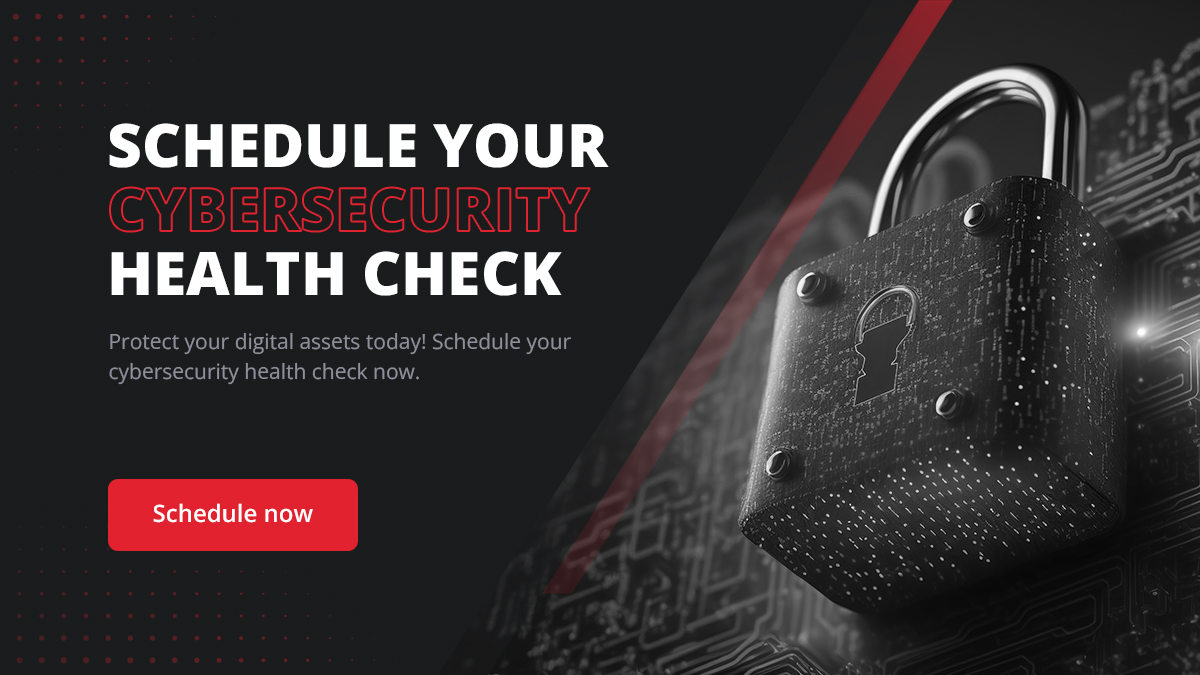
Conclusion
Effective IT risk assessment is more crucial than ever for safeguarding business operations and ensuring organizational resilience. A comprehensive IT risk assessment process helps identify potential vulnerabilities, evaluate the impact of various threats, and prioritize risks based on their potential to disrupt business continuity. Organizations can create a robust risk management strategy that aligns with their business objectives and adapts to changing threats by leveraging standardized frameworks, involving cross-functional teams, and regularly updating risk assessments.
RedZone Technologies stands out as a valuable partner in navigating the complexities of IT risk assessment. Our systematic approach, bolstered by key partnerships with leading technology providers, ensures that we offer cutting-edge solutions tailored to each business's unique needs. Our featured solutions, including advanced threat detection, vulnerability management, compliance support, and data protection services, provide comprehensive coverage to enhance your organization's security posture.
Engaging with RedZone Technologies means gaining access to expert guidance, innovative tools, and a proactive approach to risk management, helping you maintain compliance, protect critical assets, and ensure business continuity. As the threat landscape evolves, partnering with a trusted provider like RedZone Technologies ensures that your organization is well-equipped to anticipate and mitigate IT risks, fostering a secure and resilient future.
FAQs
How Can Small to Mid Enterprises Manage IT Risk Assessment with Limited Resources?
Small to mid-sized enterprises (SMEs) can manage IT risk assessment effectively even with limited resources, by adopting several strategic approaches. Firstly, SMEs should prioritize risks based on their potential impact on the business. This involves identifying the most critical assets and evaluating which vulnerabilities and threats pose the most significant risk to those assets. By concentrating on the most important risks, SMEs can ensure that their limited resources are used efficiently and effectively.
Leveraging cost-effective tools and solutions is another key strategy for SMEs. Open-source security software and cloud-based services can provide robust security features without the high costs of traditional on-premise solutions. These tools often offer essential functionalities such as vulnerability scanning, threat detection, and compliance management, making them suitable for SMEs with budget constraints.
Can IT Risk Assessment Be Outsourced, and What Are Its Pros and Cons?
Outsourcing IT risk assessment is a feasible option for many organizations, offering a range of advantages and some potential drawbacks. One of the primary benefits of outsourcing is access to specialized expertise and advanced technologies. External providers often have a team of skilled professionals with extensive experience conducting risk assessments across various industries and access to cutting-edge tools and methodologies. This expertise ensures a comprehensive assessment of the organization’s IT risks.
Outsourcing can also be cost-effective, particularly for organizations that do not have the resources to build and maintain an in-house security team. By outsourcing, companies can avoid the significant investments required for hiring specialized personnel and purchasing expensive security tools. This approach allows organizations to focus their internal resources on core business activities while ensuring that their IT risk management is handled by experts.
How Do Changes in Technology Affect IT Risk Assessments Over Time?
Changes in technology significantly impact IT risk assessments over time by introducing new risks and vulnerabilities that organizations must address. As technology evolves, new systems, applications, and devices are integrated into the IT environment, potentially introducing unique security challenges. Emerging technologies such as cloud computing, the Internet of Things (IoT), artificial intelligence (AI), and machine learning (ML) can create new attack surfaces and vulnerabilities that traditional security measures may not adequately address.
The rapid pace of technological advancement also means that threat actors continuously develop new tactics and exploit emerging technologies, making it essential for organizations to update their risk assessments to account for these changes regularly. This dynamic environment necessitates a proactive approach to risk management, where organizations continuously monitor technological trends, assess their potential impact on security, and adjust their risk mitigation strategies accordingly.
Who Should Be Involved in the IT Risk Assessment Process from the Organization?
The IT risk assessment process should involve diverse stakeholders from across the organization to ensure a comprehensive evaluation of risks. Key participants typically include:
- IT and Security Teams: These teams lead the technical aspects of the risk assessment, including identifying vulnerabilities, analyzing threats, and implementing mitigation strategies. Their expertise is crucial for understanding the technical details of the IT environment and potential security risks.
- Executive Management: Senior leaders provide strategic direction and ensure the risk assessment aligns with the organization’s overall business objectives and risk tolerance. Their involvement is essential for prioritizing risks and allocating the necessary resources for mitigation efforts.
- Operations and Business Unit Leaders: These individuals offer insights into how IT risks can impact business processes and operations. Their input helps evaluate the potential business impact of identified risks and develop practical mitigation strategies supporting operational continuity.
- Compliance and Legal Teams: These teams ensure the risk assessment process addresses regulatory requirements and legal obligations, helping the organization avoid compliance violations and potential legal consequences.
- Human Resources: HR can provide valuable insights into risks related to employee behavior and insider threats and support the development of security training and awareness programs.
Finance Department: The finance team assesses the potential financial impact of identified risks and helps develop budgets for risk mitigation initiatives.
 Security Updates
Security UpdatesUnderstanding IT Compliance: Scope, Benefits, and Challenges
Discover what IT compliance is, its importance, benefits, risks of non-compliance, frameworks, and how to achieve robust IT compliance in your organization.
 Security Updates
Security UpdatesImplement Secure Browsing with Powerful SSL Decryption
Explore the essentials of SSL decryption, its importance, challenges, and best practices for enhancing security and compliance for business in a detailed guide
 Security Updates
Security UpdatesTransitioning from Proxy Firewalls to Endpoint Security
Explore the evolution from proxy firewalls to endpoint security, enhanced threat detection, data encryption, and comprehensive protection for modern networks.
 Security Updates
Security UpdatesExpert IT Risk Assessment: Protect Your Business Today!
Mitigate potential IT threats with our comprehensive risk assessment guide, ensuring your digital infrastructure. Ensure your business is secure an...
 Security Updates
Security UpdatesEssential Guide to Best Practices in Compliance Security
Explore essential strategies for compliance security in this comprehensive guide. Learn about safeguarding your business and meeting regulatory sta...
 Security Updates
Security UpdatesSecure Your Data with Expert Cloud Database Solutions
Learn efficient solutions and secure your cloud databases with encryption and compliance features, ensuring data safety and privacy across all plat...
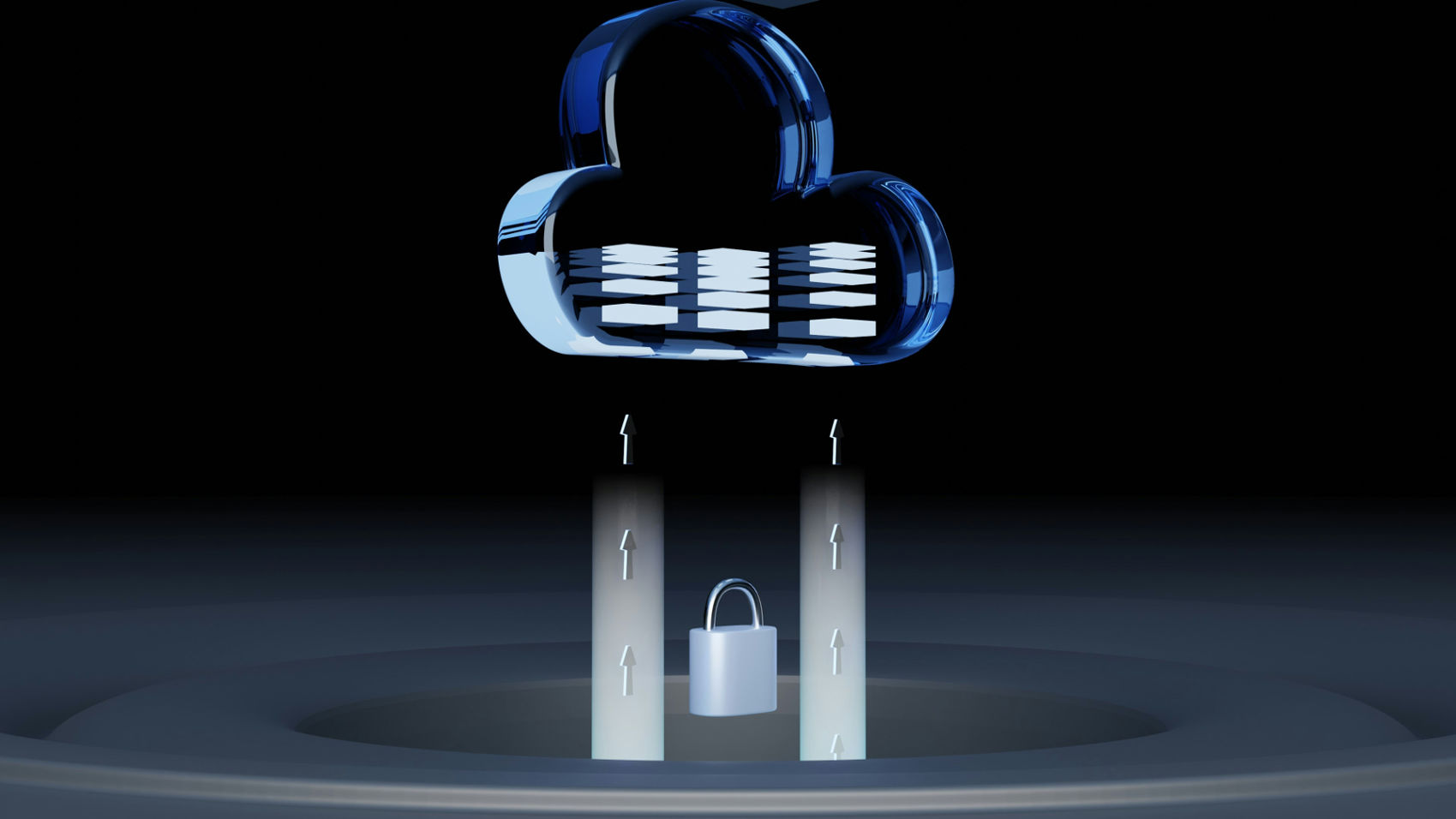 Security Updates
Security UpdatesA Guide to Cloud Network Technology: Benefits and Types
Unlock the potential of cloud network technology for seamless connectivity. Learn and scale solutions that drive business innovation and growth via...
 Security Updates
Security UpdatesAffordable Managed IT Services for Small Businesses
Explore top-managed IT services for small businesses to boost efficiency and security. Get expert insights and practical tips to optimize your IT o...
 Security Updates
Security UpdatesSecure Your Network with Gateway Security Solutions
Explore the essentials of gateway security: learn about its importance for network protection and best practices to safeguard your digital assets e...
 Security Updates
Security UpdatesDisaster Recovery Testing: Ensure Business Continuity
Explore effective disaster recovery testing strategies in this guide to maintain business continuity, prevent data loss, and minimize downtime duri...
 Security Updates
Security UpdatesMaximizing Security: Vulnerability Management Lifecycle
Explore the complete guide to the Vulnerability Management Lifecycle to boost your cyber resilience and secure your business IT infrastructure effe...
 Security Updates
Security UpdatesYour Network with Endpoint Security Management
Explore our comprehensive guide on Endpoint Security Management to understand its importance, how it works, and best practices for robust network s...
 Security Updates
Security UpdatesEnsuring Security Compliance: Tips, Insights & Strategies
Discover the essentials of security compliance, its importance, frameworks, and tools. Learn how to protect data and meet regulatory standards effe...
 Security Updates
Security UpdatesBoost Your Security with Internal Penetration Testing
Dive into internal penetration testing with our in-depth guide. Learn the essentials, techniques, and best practices to fortify your cybersecurity ...
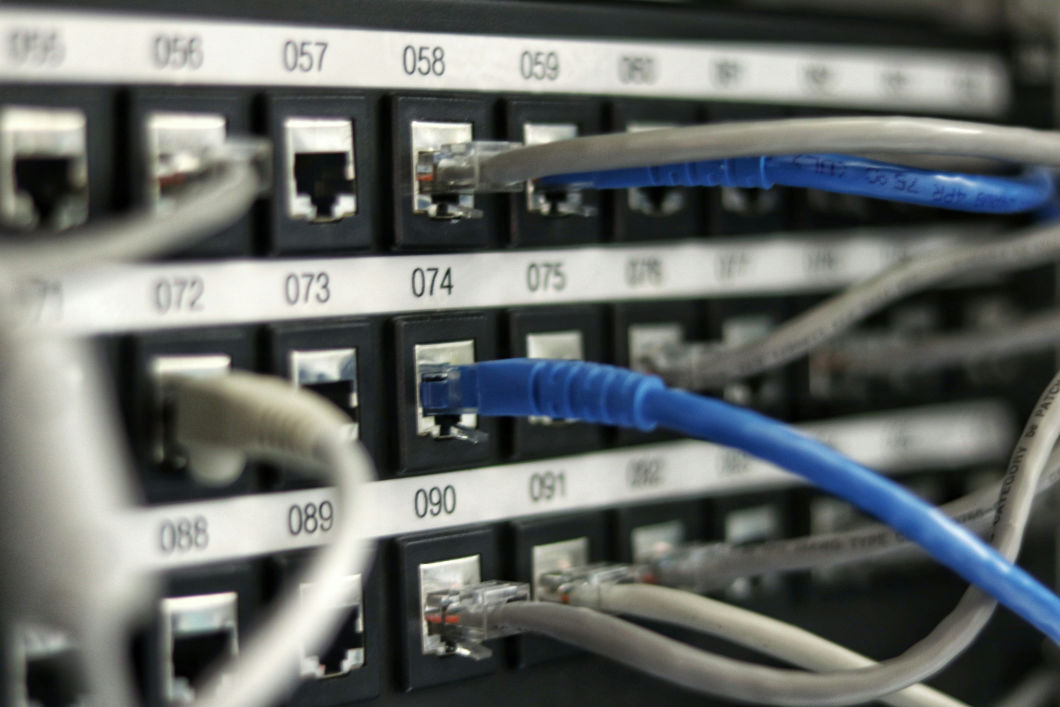 Security Updates
Security UpdatesEgress vs Ingress: A Guide to Data Traffic Management
Understand Egress vs Ingress in data management. Learn and explore their roles, traffic analysis, risks, and best practices for network and cloud s...
 Security Updates
Security UpdatesPrevent Credential Harvesting to Protect Your Precious Data
Understand credential harvesting. Learn how it works, common techniques, its impact, and strategies to prevent and mitigate attacks to secure your ...
 Security Updates
Security UpdatesSecure Your Big Data: Top Solutions for Data Security
Protect your valuable data with our robust big data security solutions. Learn about the threats and Safeguard against cyber threats and ensure comp...
 Security Updates
Security UpdatesSecure Your Network with Advanced Management Solutions
Explore the details of comprehensive network security management: Learn key strategies, best practices, and tools to safeguard your digital environ...
 Security Updates
Security UpdatesGuide to On-Path Attacks: Protecting Your Cybersecurity
Learn about on-path attacks in this comprehensive guide, exploring definitions, types, consequences, and key prevention strategies to safeguard you...
 Security Updates
Security UpdatesExploring Managed Cloud Services: A Comprehensive Guide
Dive into the Managed Cloud Services with our in-depth guide. Explore benefits, types, and best practices to enhance your business's cloud strategy...
 Security Updates
Security UpdatesComprehensive Guide to Ubiquitous Computing: Impact & Future
Explore the details of ubiquitous computing, from its core concepts and layers to its societal impact, key technologies, applications, and future p...
 Security Updates
Security UpdatesClone Phishing Explained: Detection and Prevention Guide
Discover how clone phishing works and its impact. Learn effective strategies to identify, prevent, and respond to these sophisticated email threats...
 Security Updates
Security UpdatesHow to Secure Your Business with Cyber Security Insurance
Explore the essentials of Cyber Security Insurance, covering its importance, types of coverage, benefits, and considerations for businesses in the ...
 Security Updates
Security UpdatesEfficient Data Spooling Solutions For Streamlined Operation
Learn How To Efficiently Manage And Store Your Data With Our Reliable Data Spooling Services. Keep Your Information Organized And Accessible With T...
 Security Updates
Security UpdatesMaximizing Compliance & Risk Management: Expert Strategies
Learn how to ensure business success with effective compliance and risk management strategies. Explore definitions, differences, frameworks, and ch...
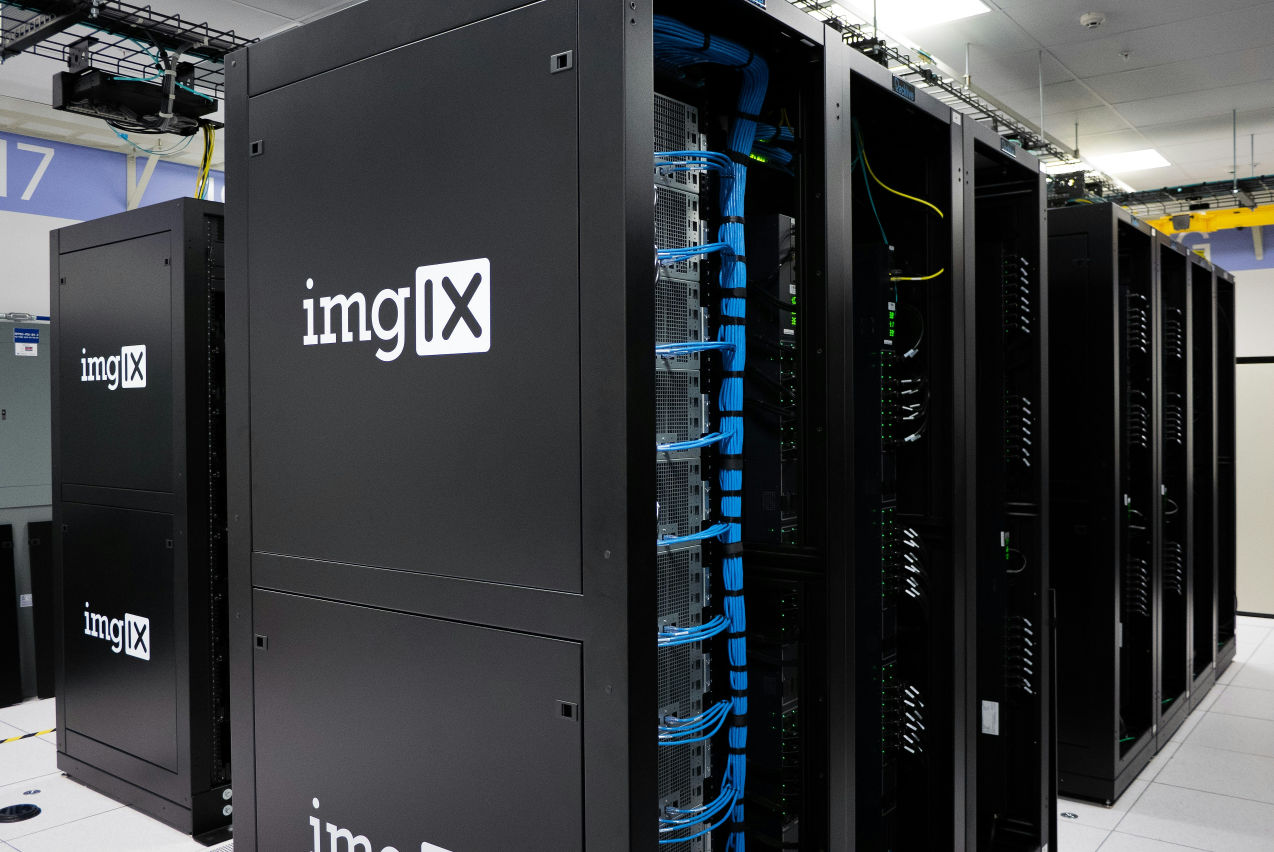 Security Updates
Security UpdatesUnderstanding MDF vs IDF: Key Differences & Benefits
Explore the crucial differences and examples between MDF and IDF in networking, understanding their roles, functions, and impact on network infrast...
 Security Updates
Security UpdatesRedZone Wins CRN's Top Security 100 & MSP 500 Awards 2024
RedZone Technologies earns CRN's Security 100 & MSP 500 Awards, affirming its leadership and innovative approach in the cybersecurity and IT manage...
 Security Updates
Security UpdatesJames Crifasi Speaks on Cybersecurity at Tech Conference
Join James Crifasi, CTO & COO of RedZone Technologies, at the Tech Conference as he explores cybersecurity's role in driving business growth and ad...
 Security Updates
Security UpdatesRedZone's James Crifasi Wins SonicWall's Technical Hero Award
CTO James Crifasi of RedZone Technologies earns SonicWall's Technical Hero of the Year, exemplifying unparalleled dedication to cybersecurity and I...
 Security Updates
Security UpdatesHow to Encrypt Email in Outlook
Learn how to encrypt email in Outlook with our step-by-step guide. Secure your messages using S/MIME, Office 365 Encryption OME, and add-ins for pr...
 Security Updates
Security UpdatesWhat Is Security Monitoring? Importance and Tools
Explore the importance of security monitoring, its key roles, types, and how it protects organizations against threats, ensuring compliance and pro...
 Security Updates
Security UpdatesServer 2012 R2 End of Life: Implications and Next Steps
Learn about Server 2012 R2 end of life: Understand its impact, key dates, risks post-EOL, and explore upgrade options and migration strategies for ...
 Security Updates
Security UpdatesProtect Personal Data: Smishing and Phishing Prevention
Know how to identify and protect against smishing and phishing attacks. Learn the techniques, types, and preventive measures for personal and busin...
 Security Updates
Security UpdatesSmurf Attack Guide: Prevention & Detection Strategies
Explore prevention & recovery from Smurf Attacks: Understand DDoS defense, detection signs, and secure network practices in our detailed cybersecur...
 Security Updates
Security UpdatesWhat is a Bad USB Attack, and How Do You Prevent It?
Learn about Bad USB attacks, their various forms, and strategies for safeguarding devices. Learn how to mitigate risks with effective prevention te...
 Security Updates
Security UpdatesKey Differences Between DOS Attack vs DDOS Attack
Explore the key differences between DDoS vs DoS attacks, their types, impacts, and prevention strategies in our comprehensive guide to enhance cybe...
 Security Updates
Security UpdatesUnderstanding the Impact of a Ping of Death Attack
Explore the ins and outs of Ping of Death attacks. Understand how they work, their impact on networks, and strategies to prevent them to keep your ...
 Security Updates
Security UpdatesThe Power of the Human Firewall: Your First Line of Defense
Discover the critical role of the human firewall in cybersecurity, combining employee vigilance with technology to protect against cyber threats ef...
 Security Updates
Security UpdatesStateful Firewall vs. Stateless Firewalls: What's the Difference?
Learn the key differences between stateful and stateless firewalls and how they protect your network. Discover the right choice for your security n...
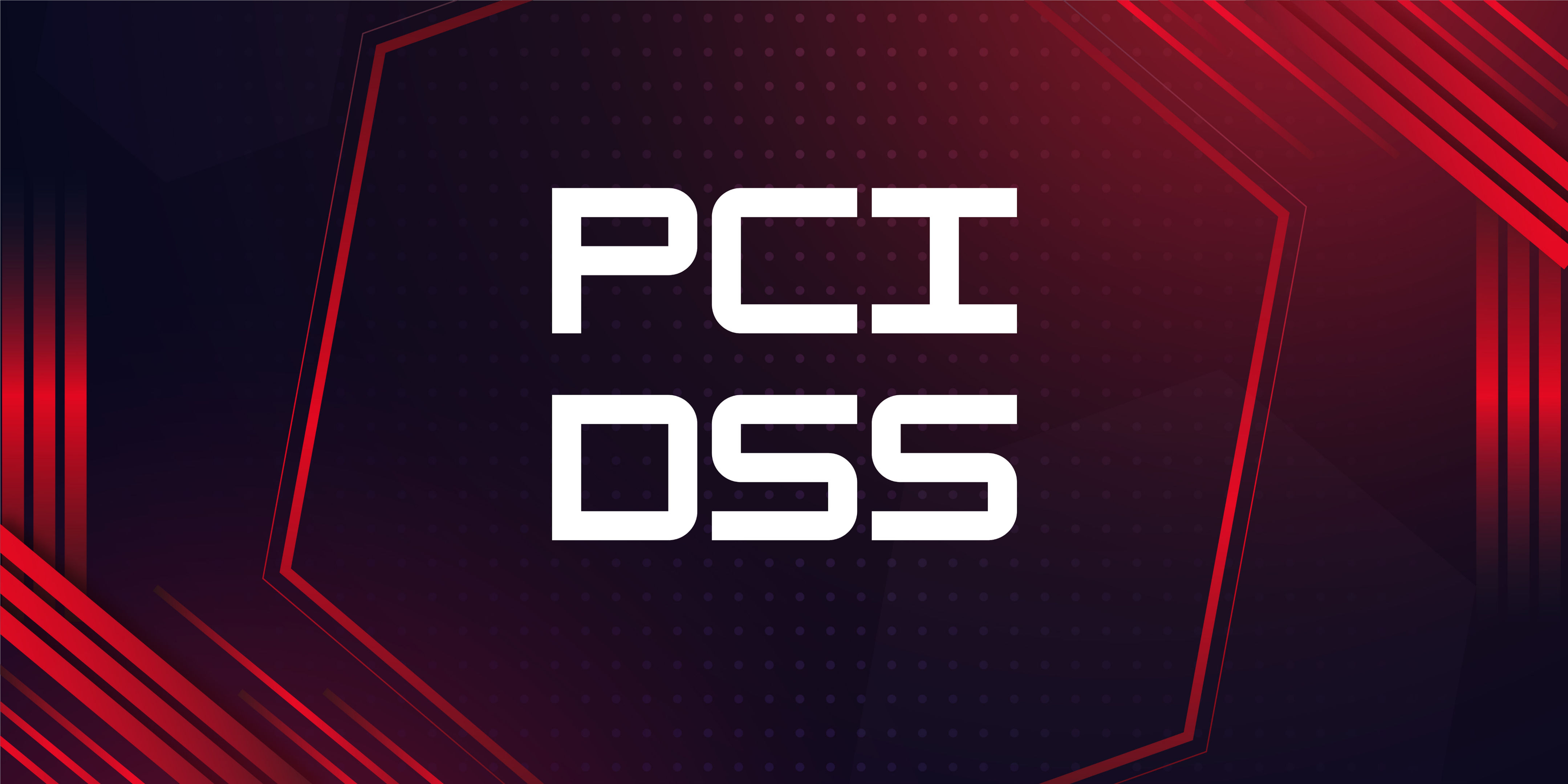 Security Updates
Security UpdatesUnderstanding the 4 Levels of PCI Compliance
Explore PCI DSS Compliance with RedZone: Key steps to protect card data and ensure secure transactions. Learn about compliance levels and tips for ...
 Security Updates
Security UpdatesWhat Is a Security Breach and How to Prevent Them
Learn how to effectively guard your business against security breaches with RedZone Technologies. Discover simple steps to keep your data safe and ...
 Security Updates
Security UpdatesUnderstanding Tailgating in Cybersecurity
Understand tailgating attacks in cybersecurity: what they are, how they work, and effective strategies for prevention to keep your business...
 Security Updates
Security UpdatesWhat is a Managed Service Provider and Its Benefits
Explore the role of Managed Service Providers (MSPs) in enhancing IT efficiency and cybersecurity for businesses, covering benefits, servi...
 Security Updates
Security UpdatesBreach Prevention: 5 Best Practices to Protect Your Data
Learn about data breaches: what they are, their impact, and how to prevent them. Explore best practices for securing your business against cyber th...






